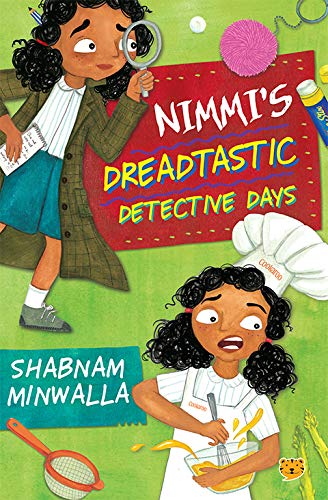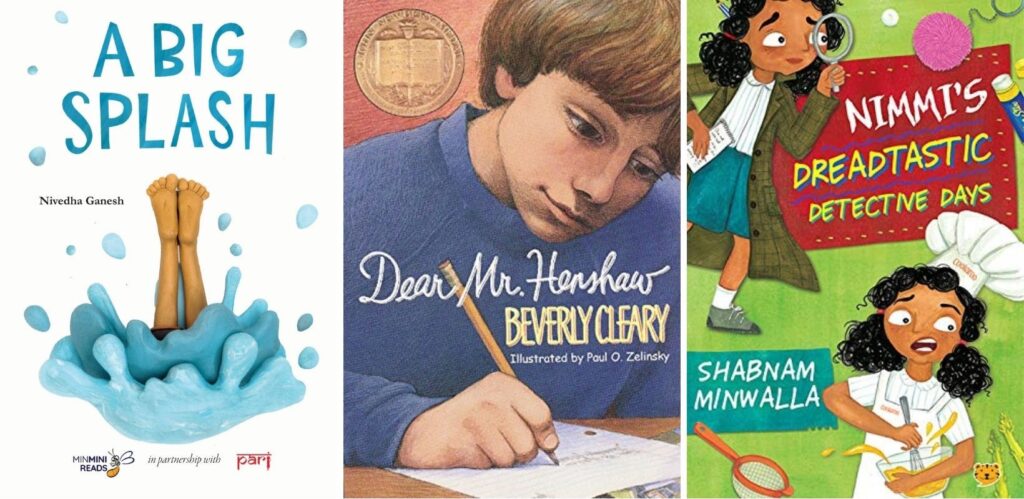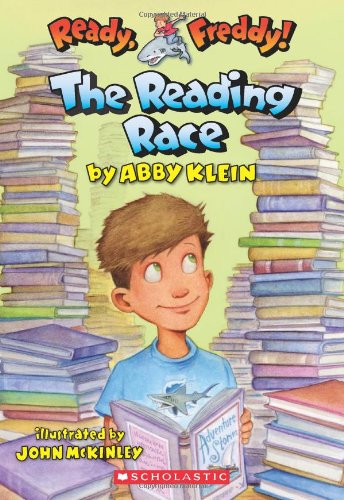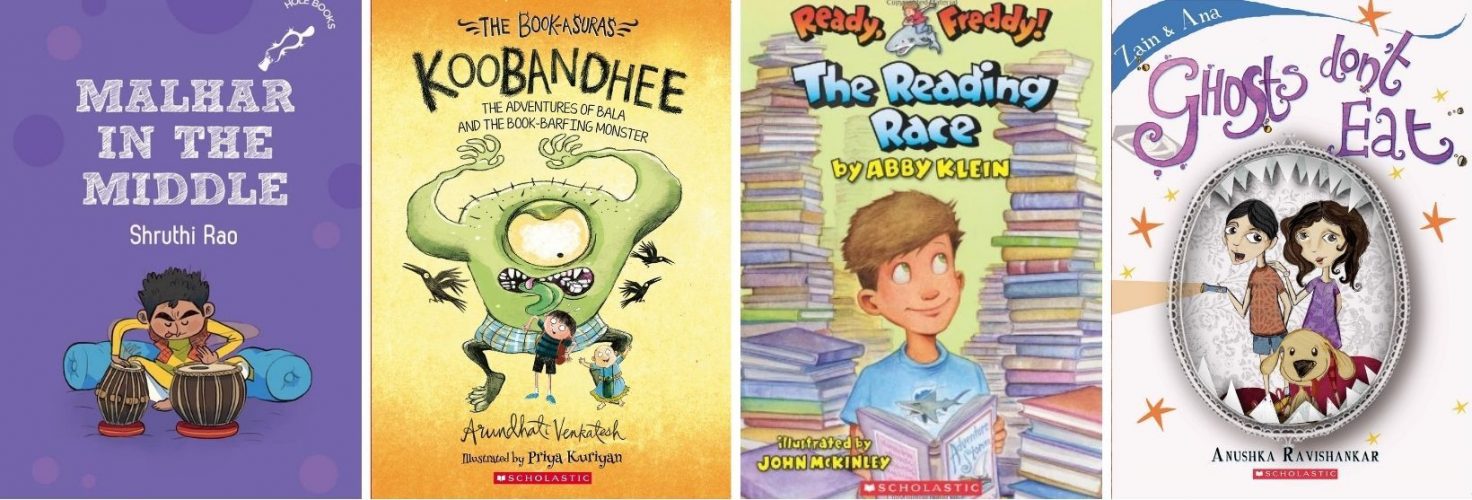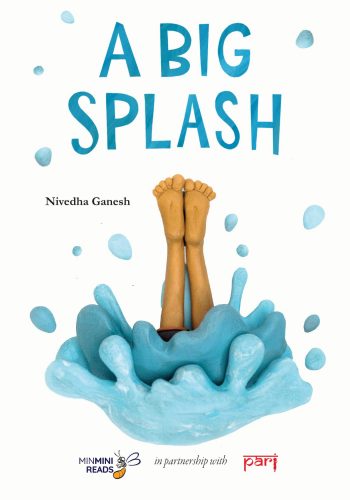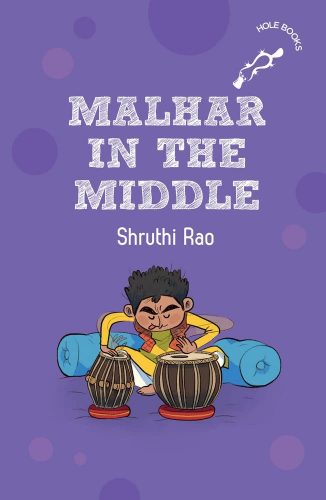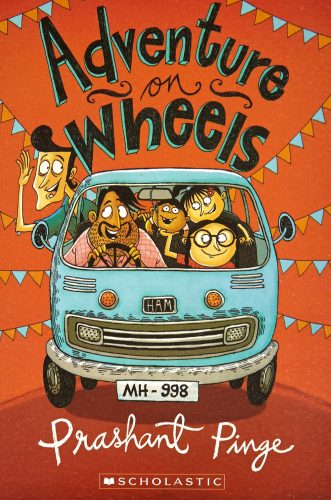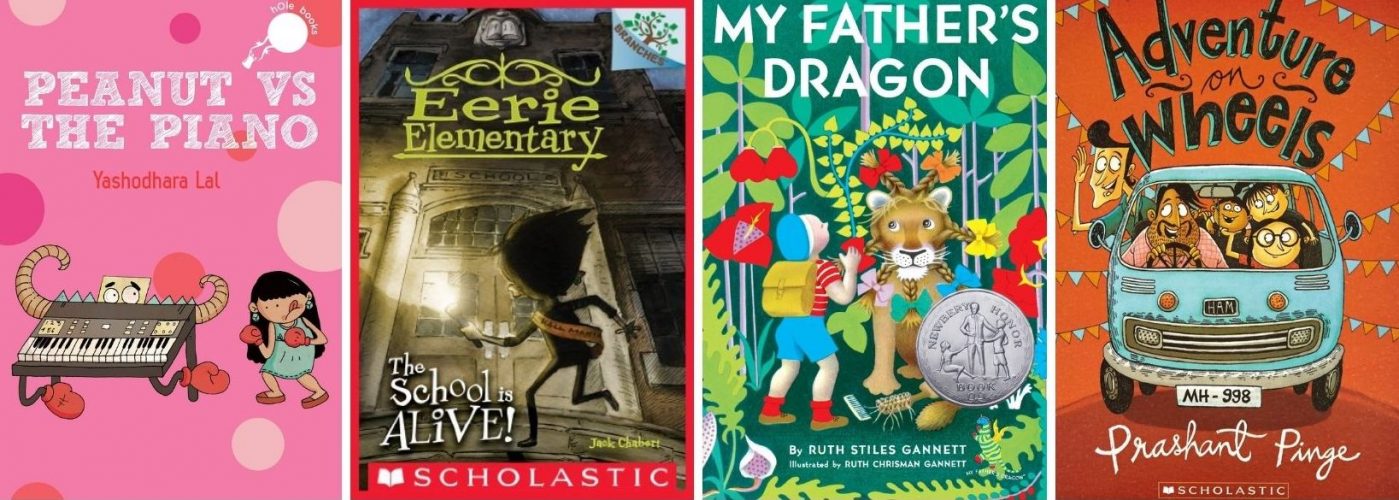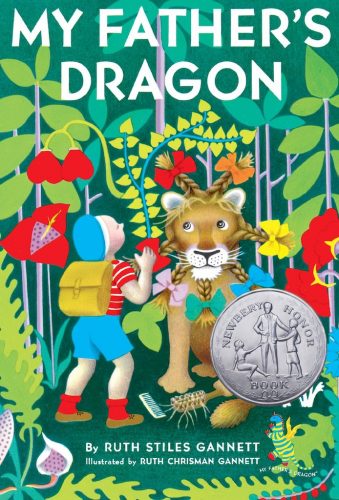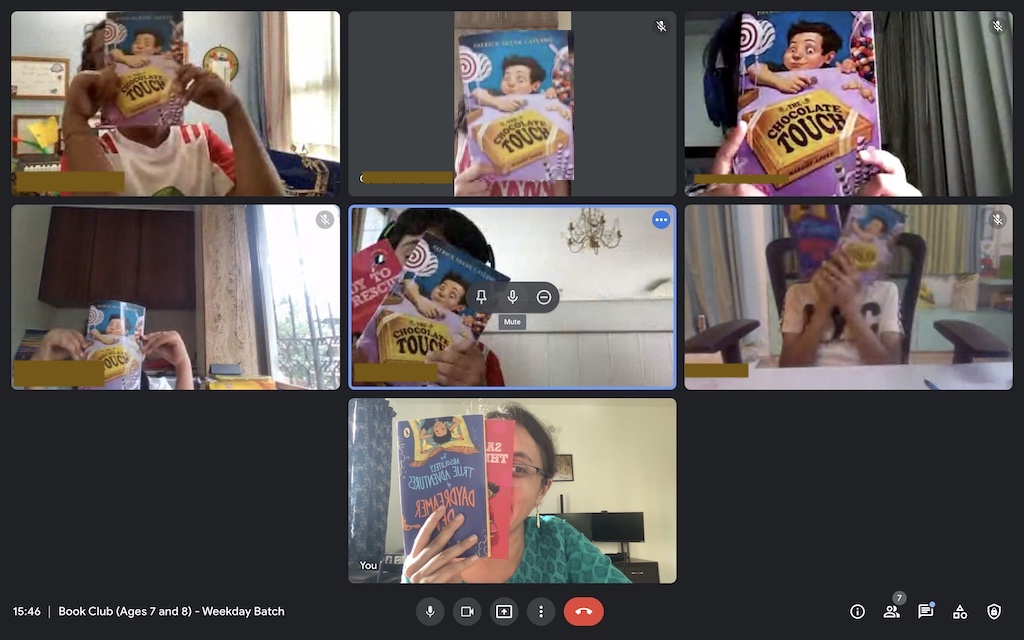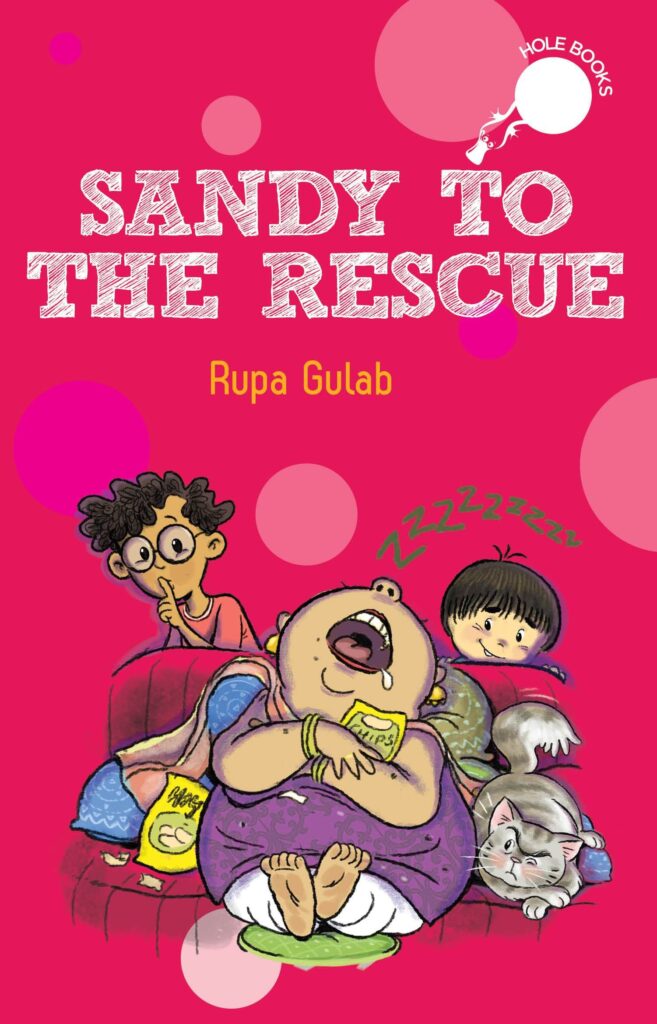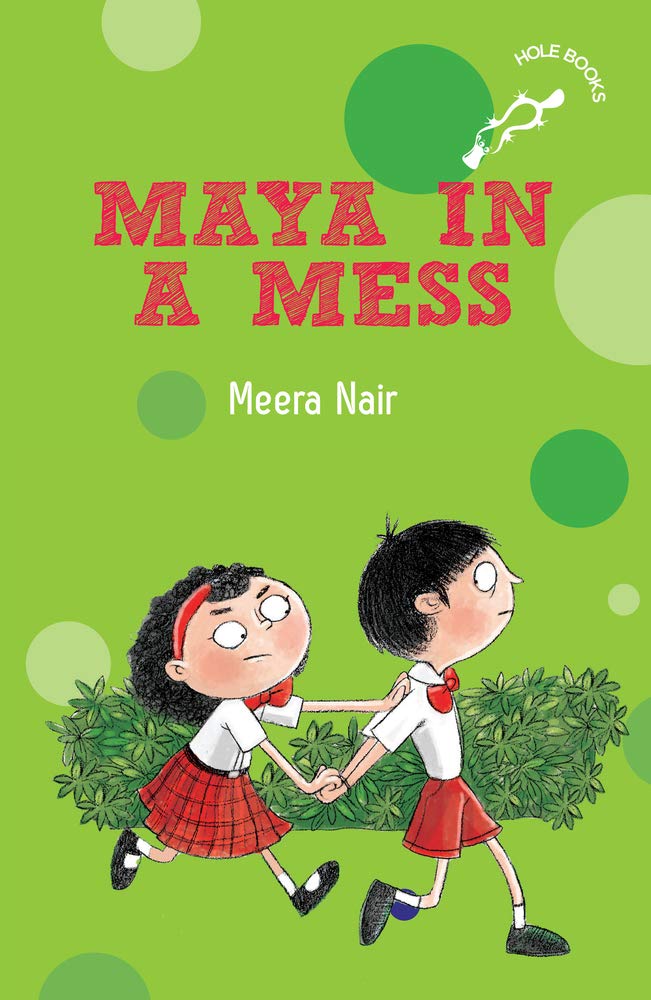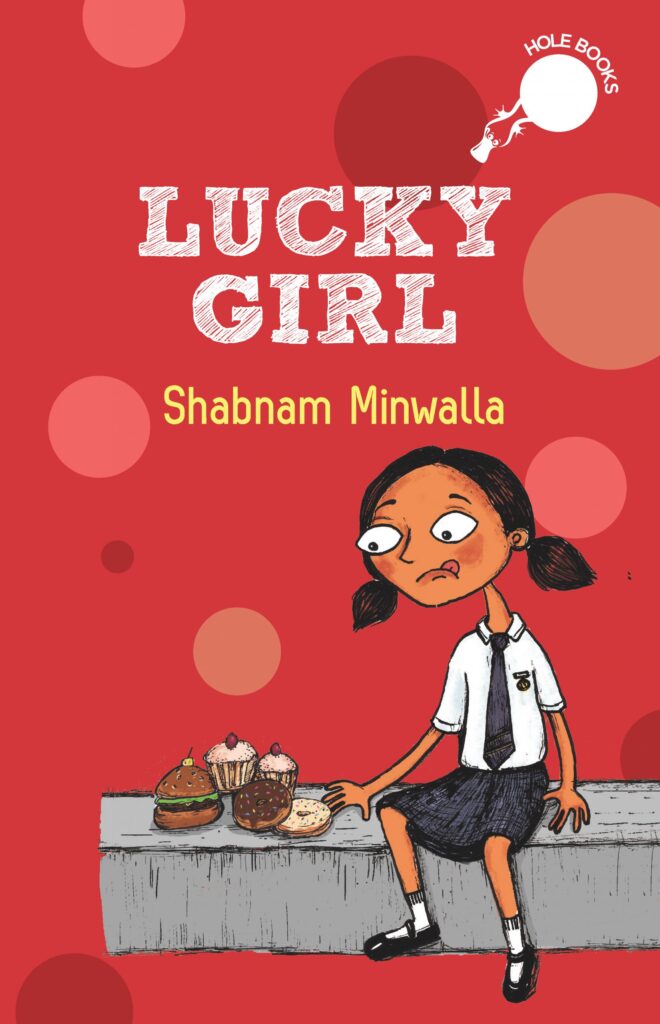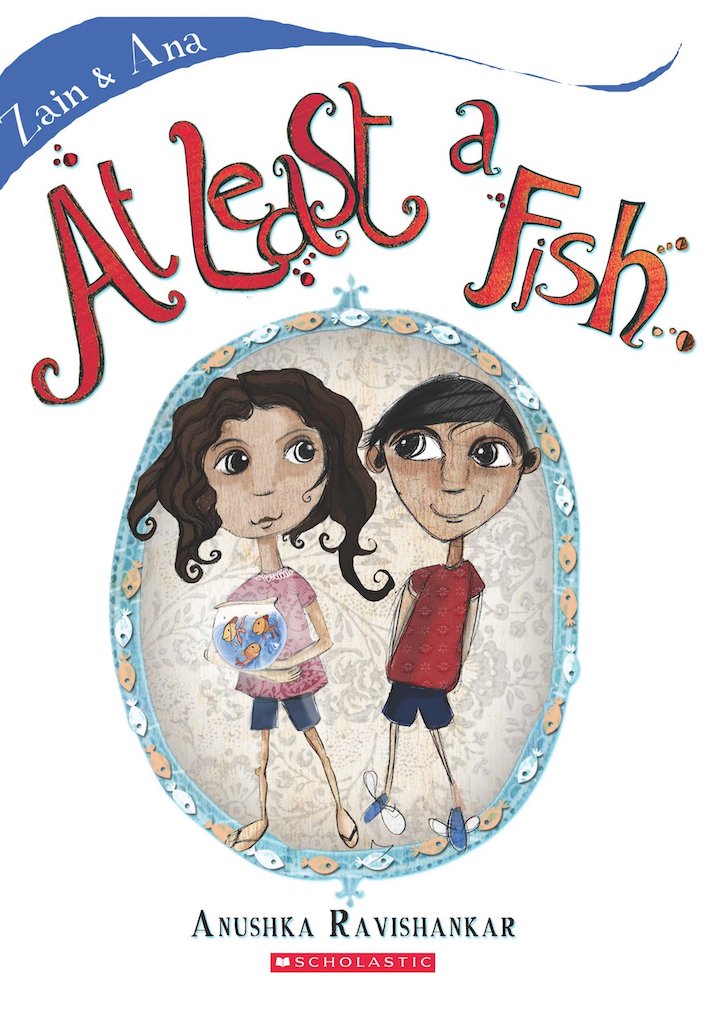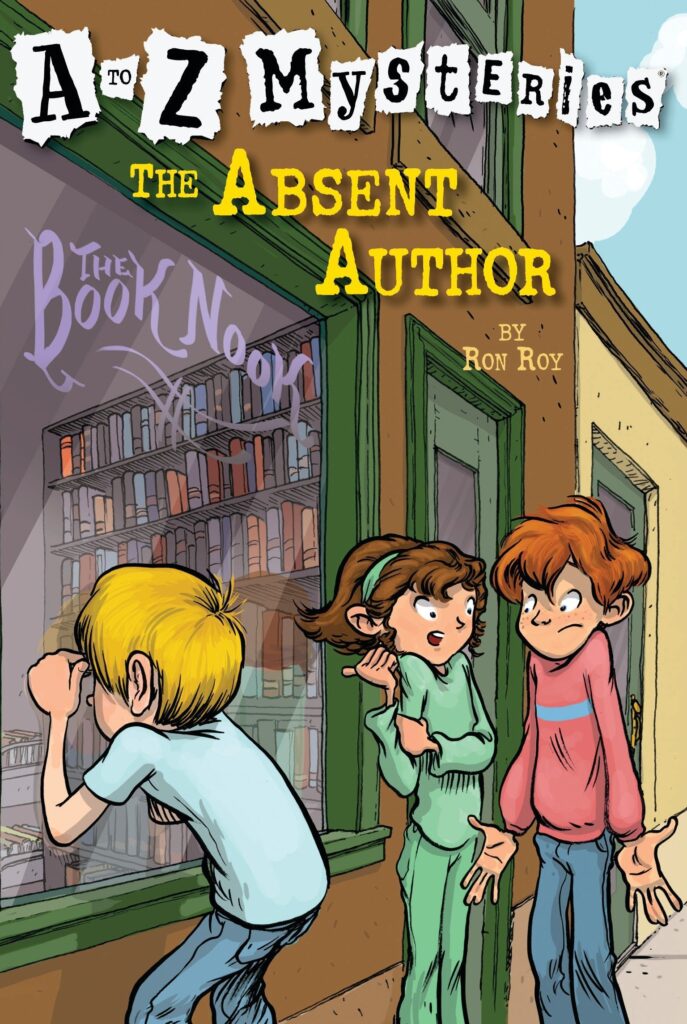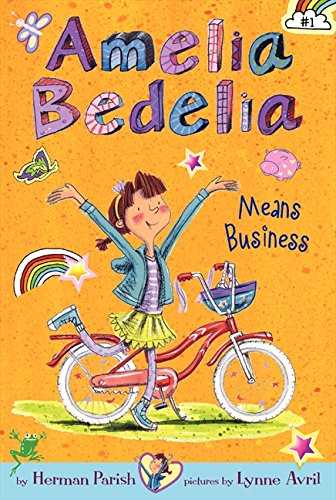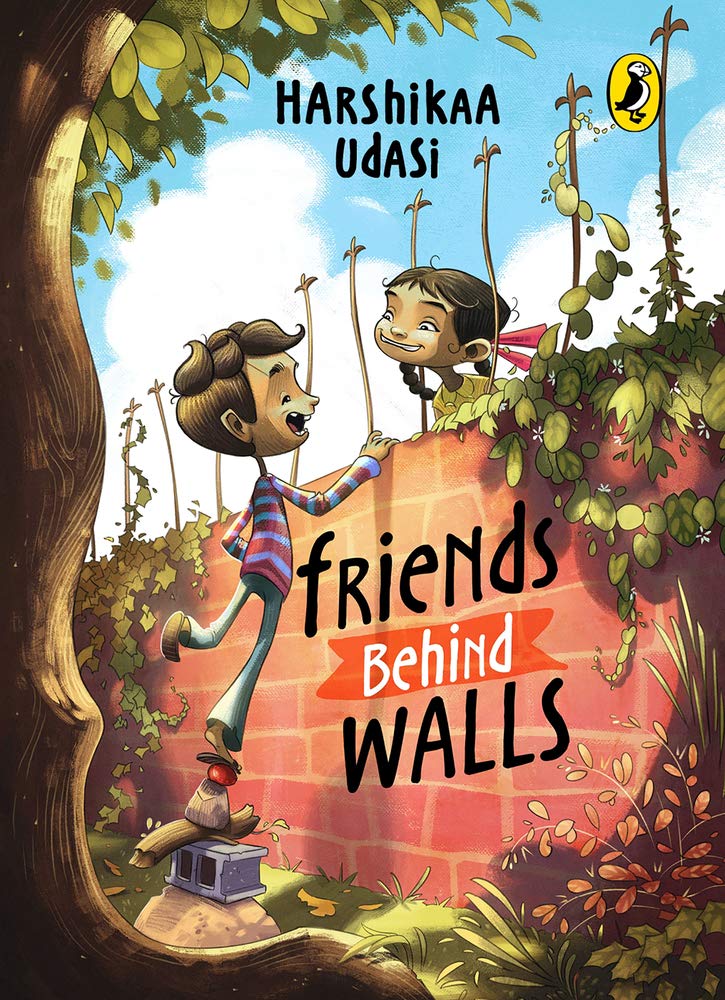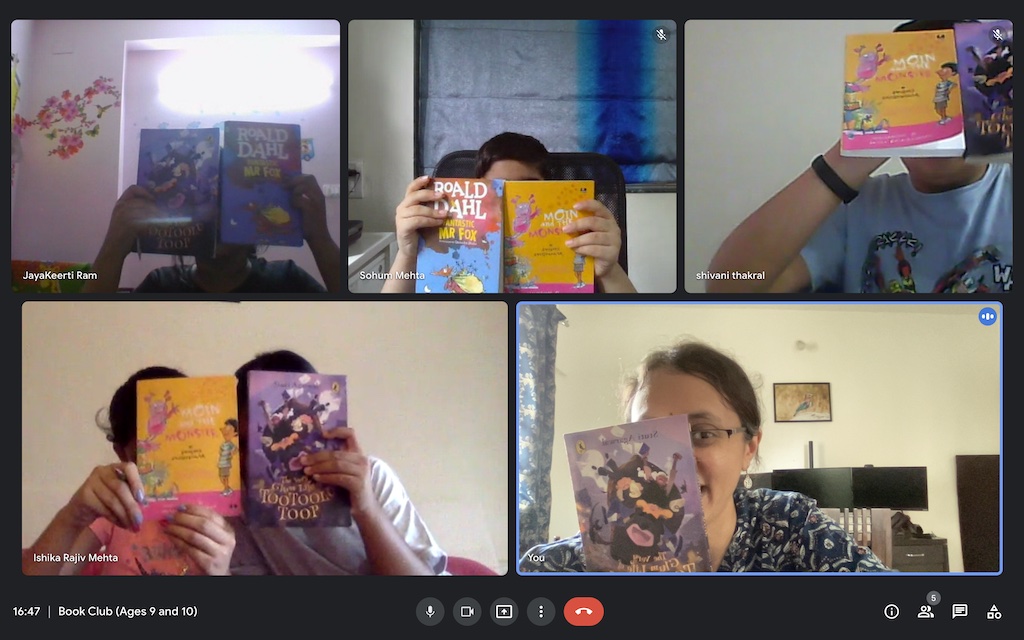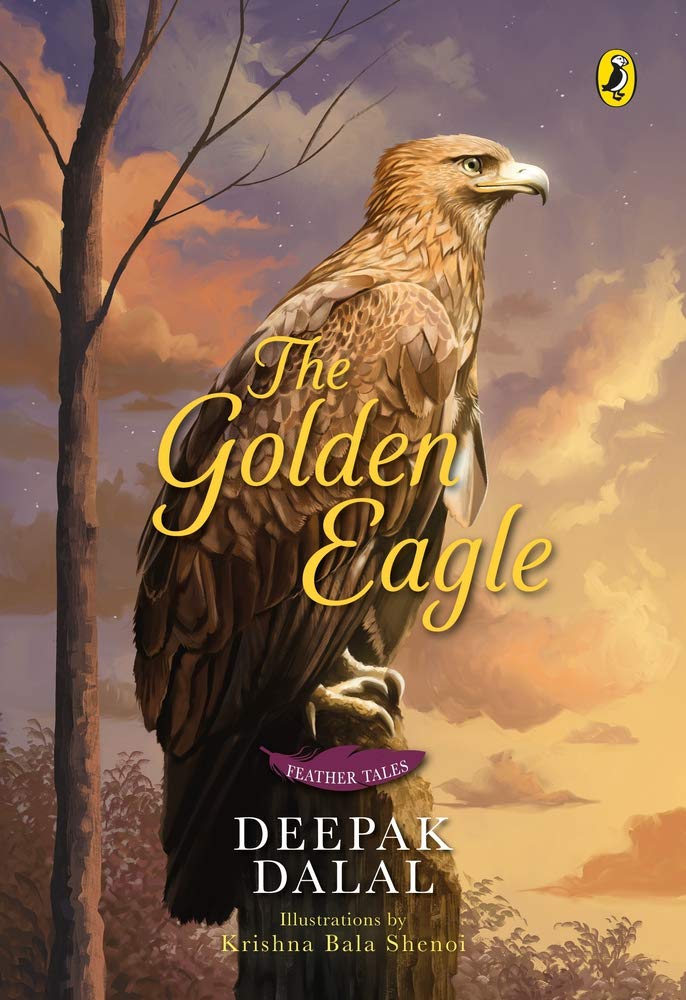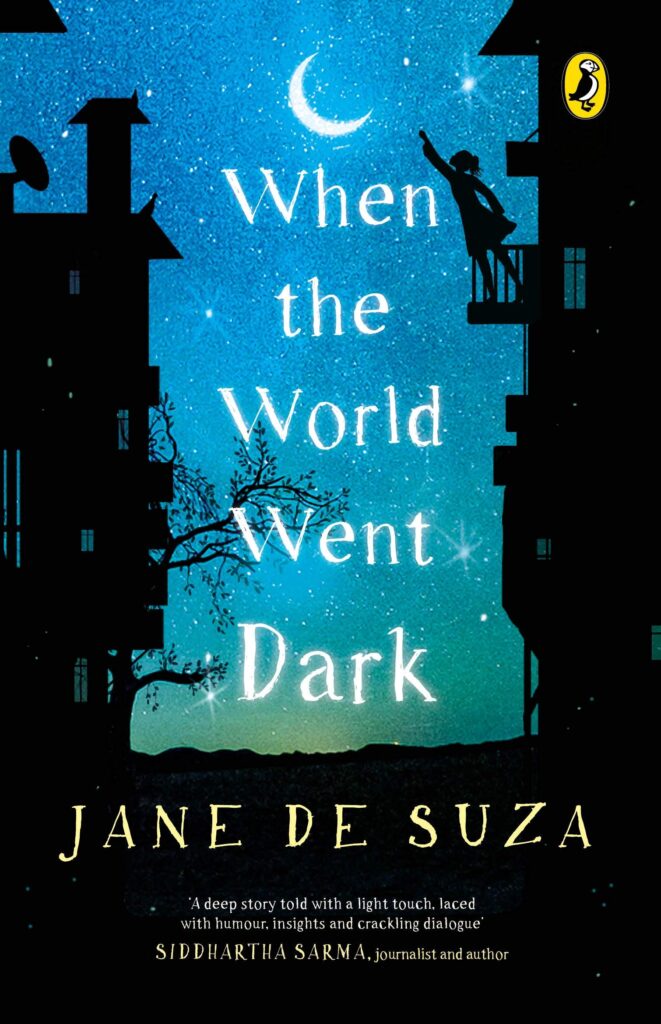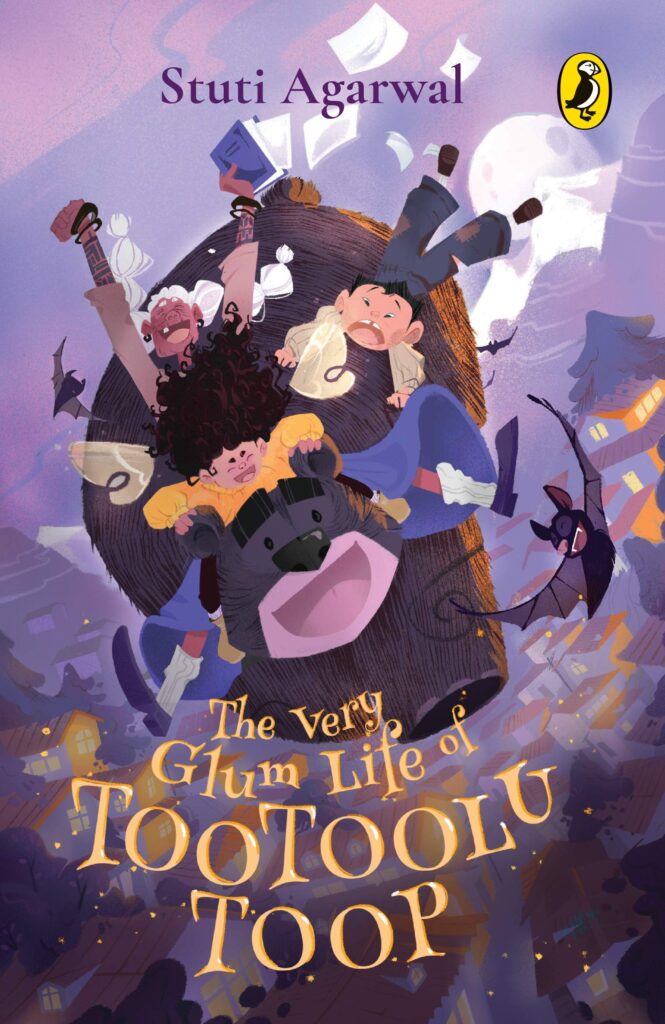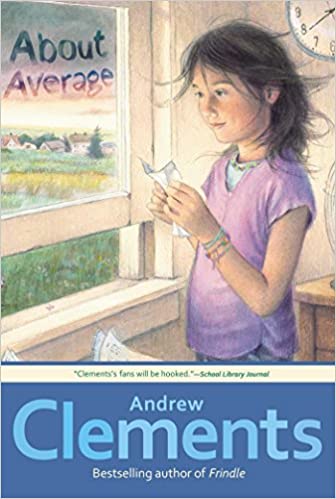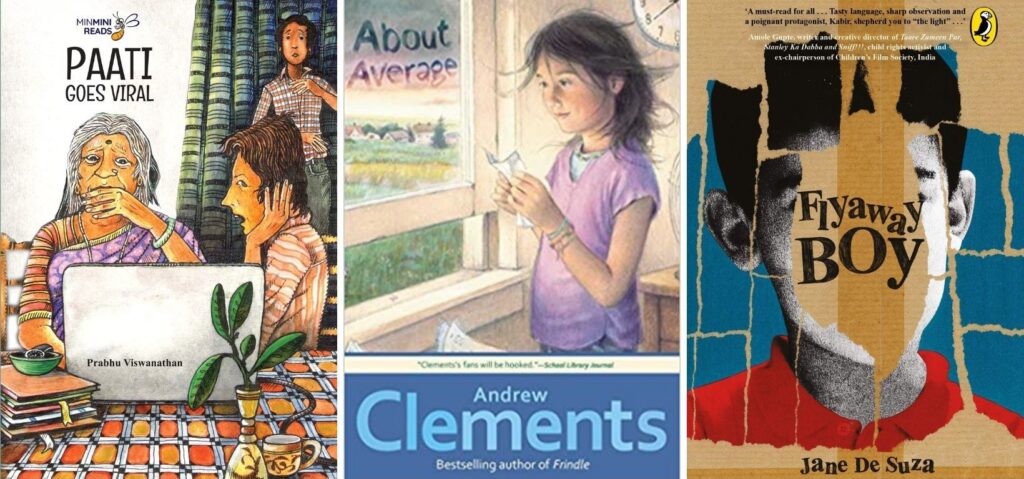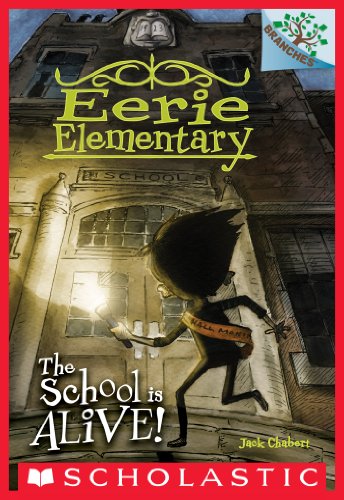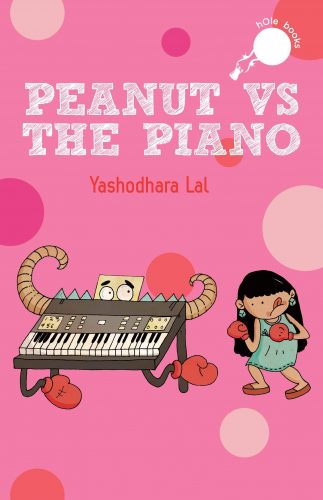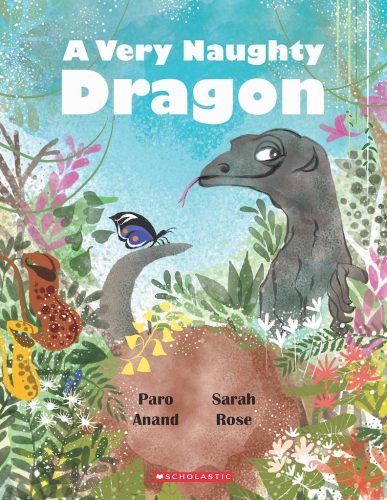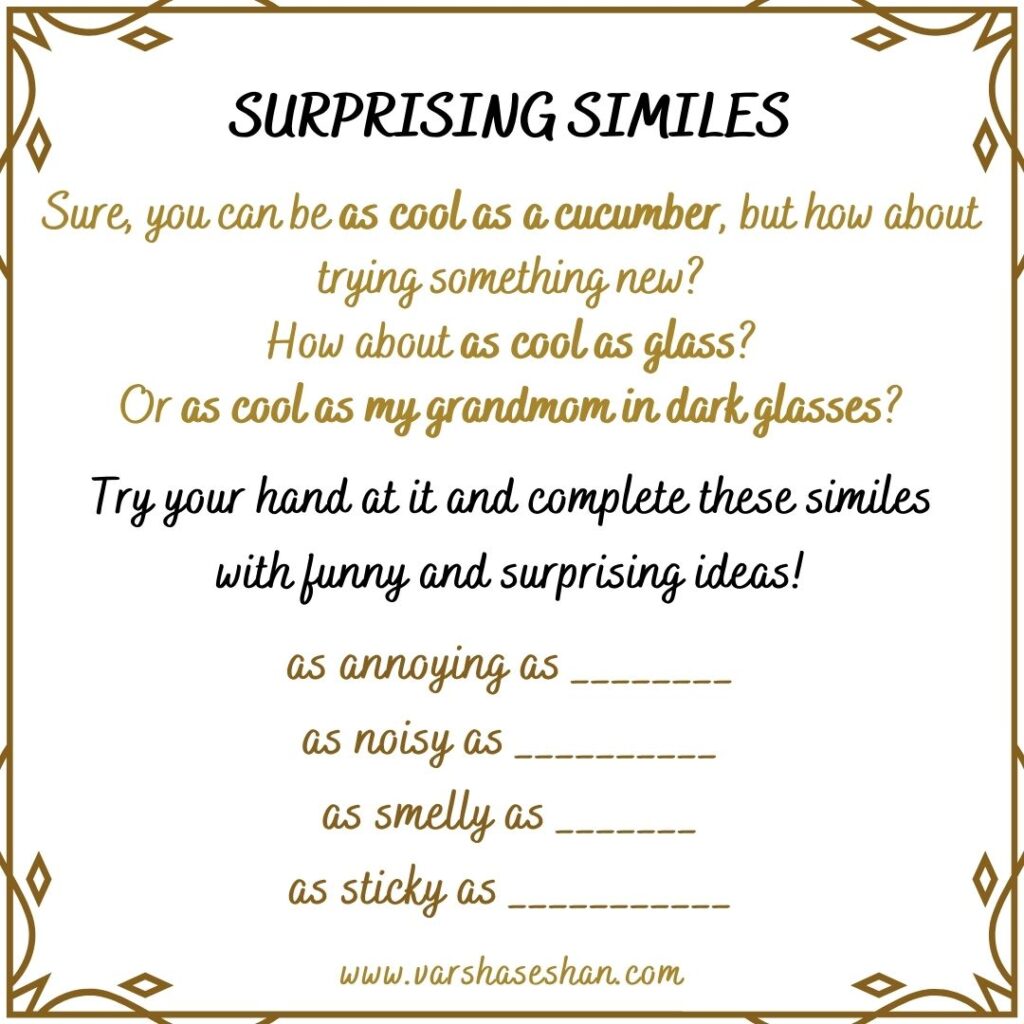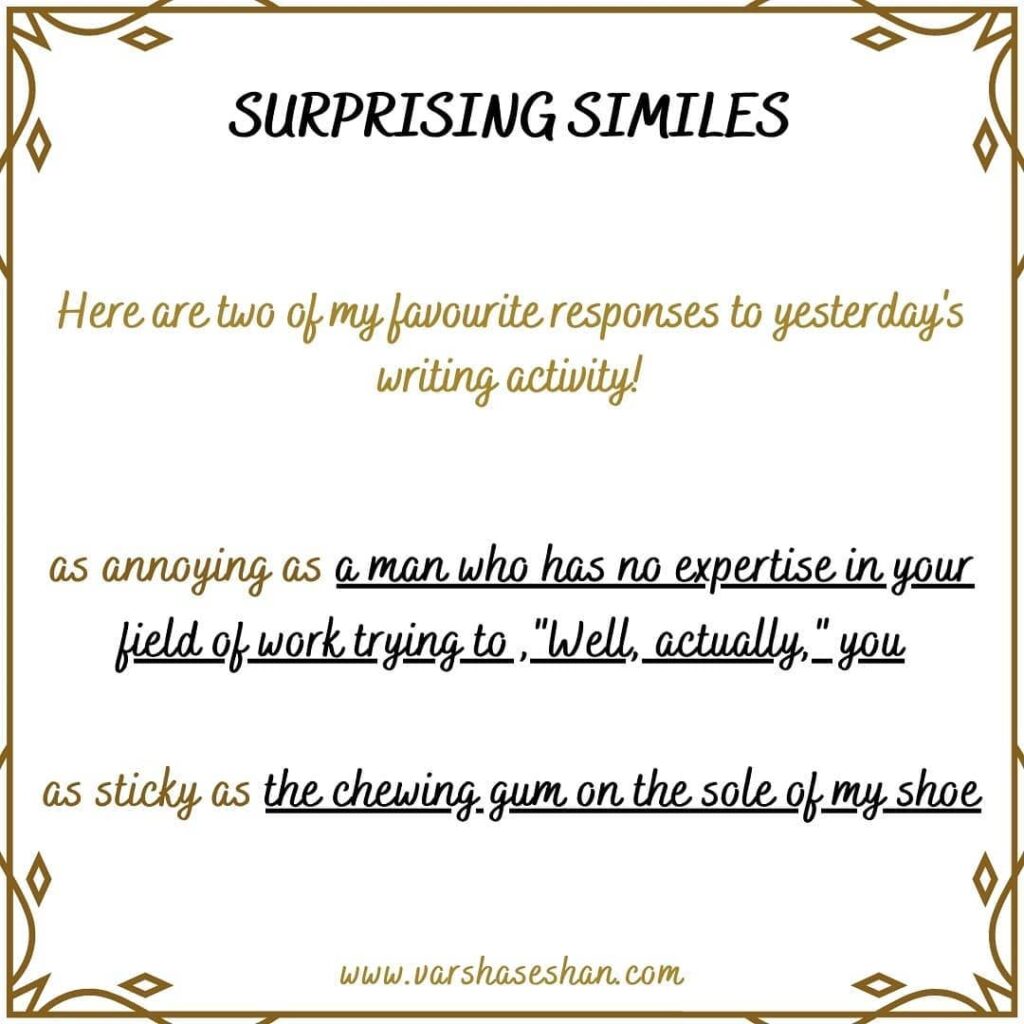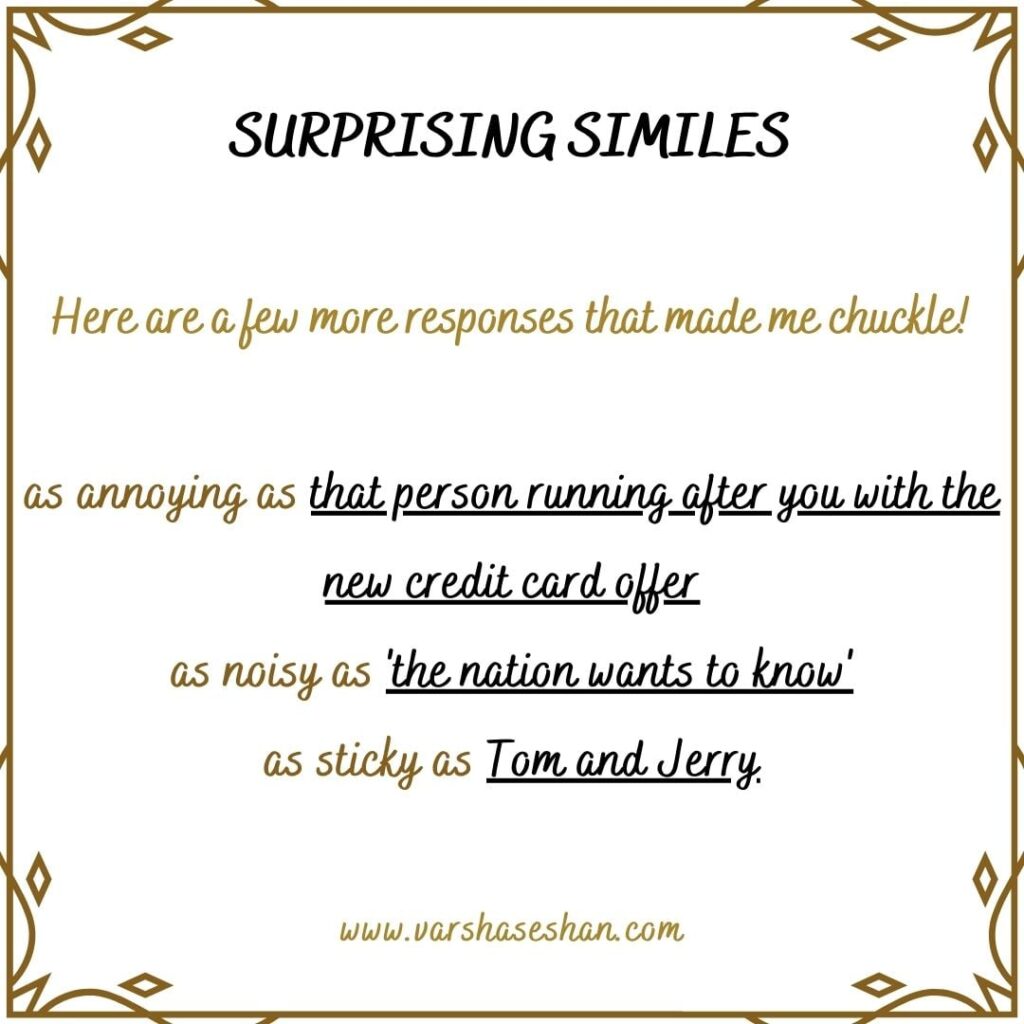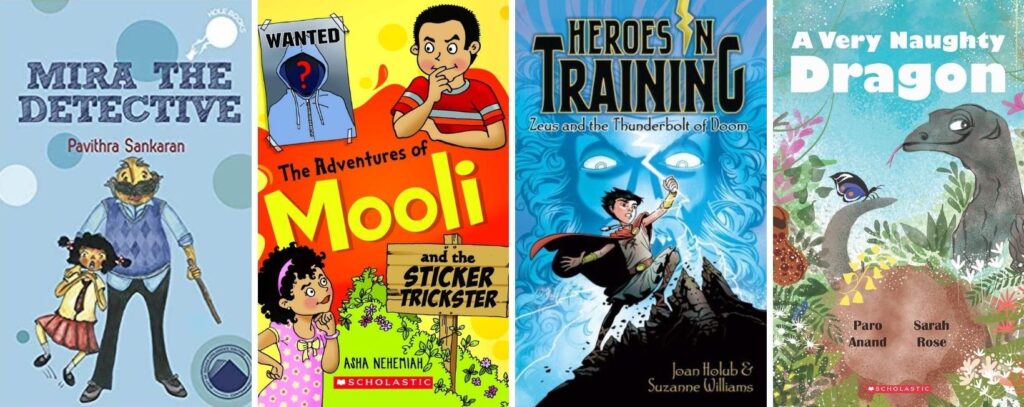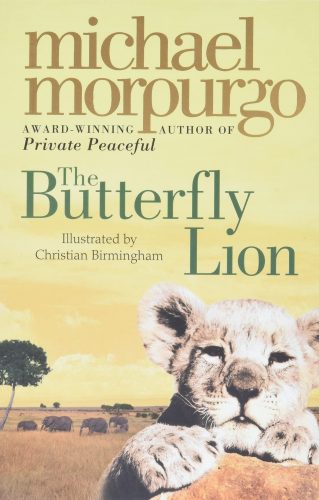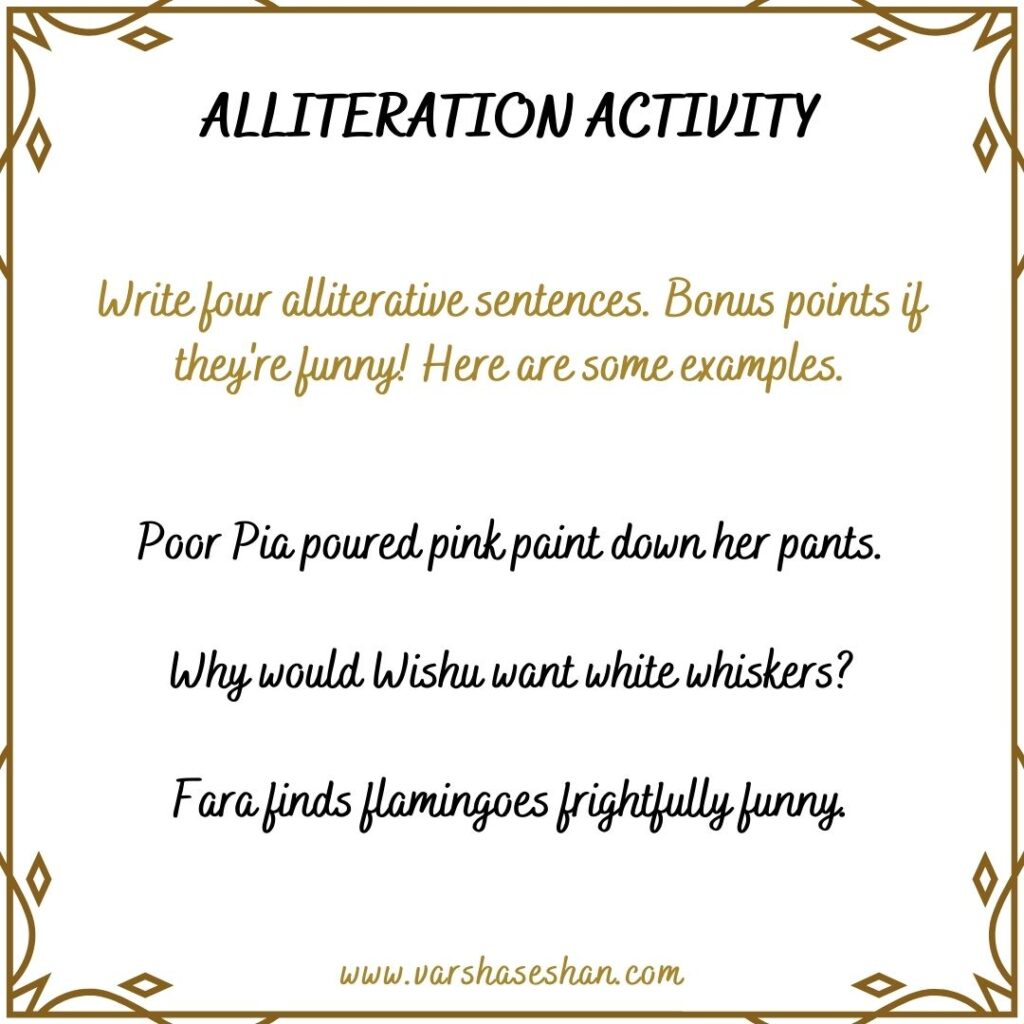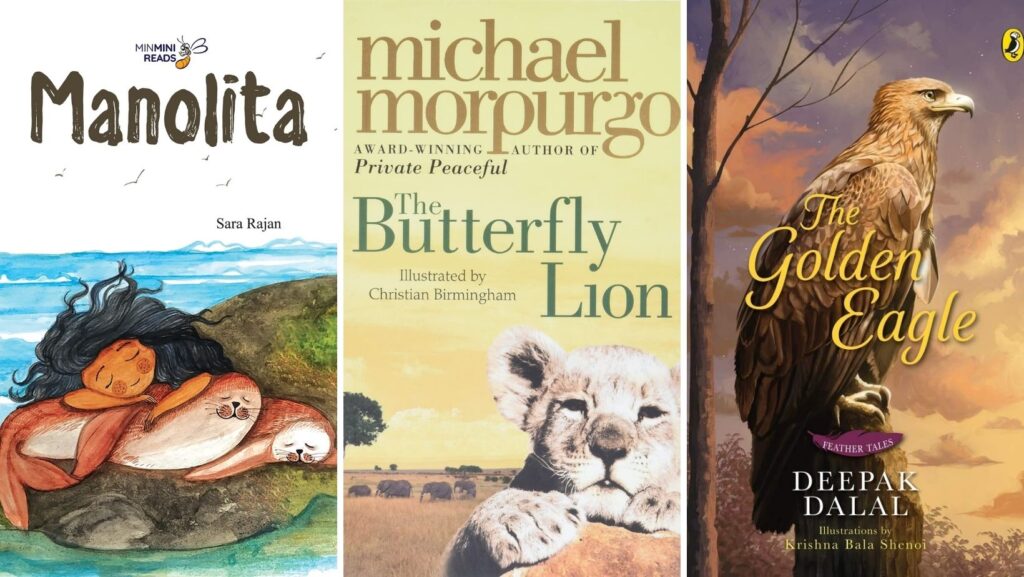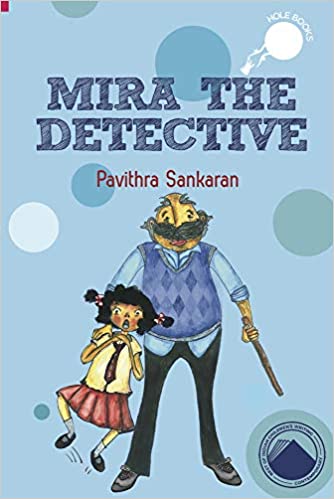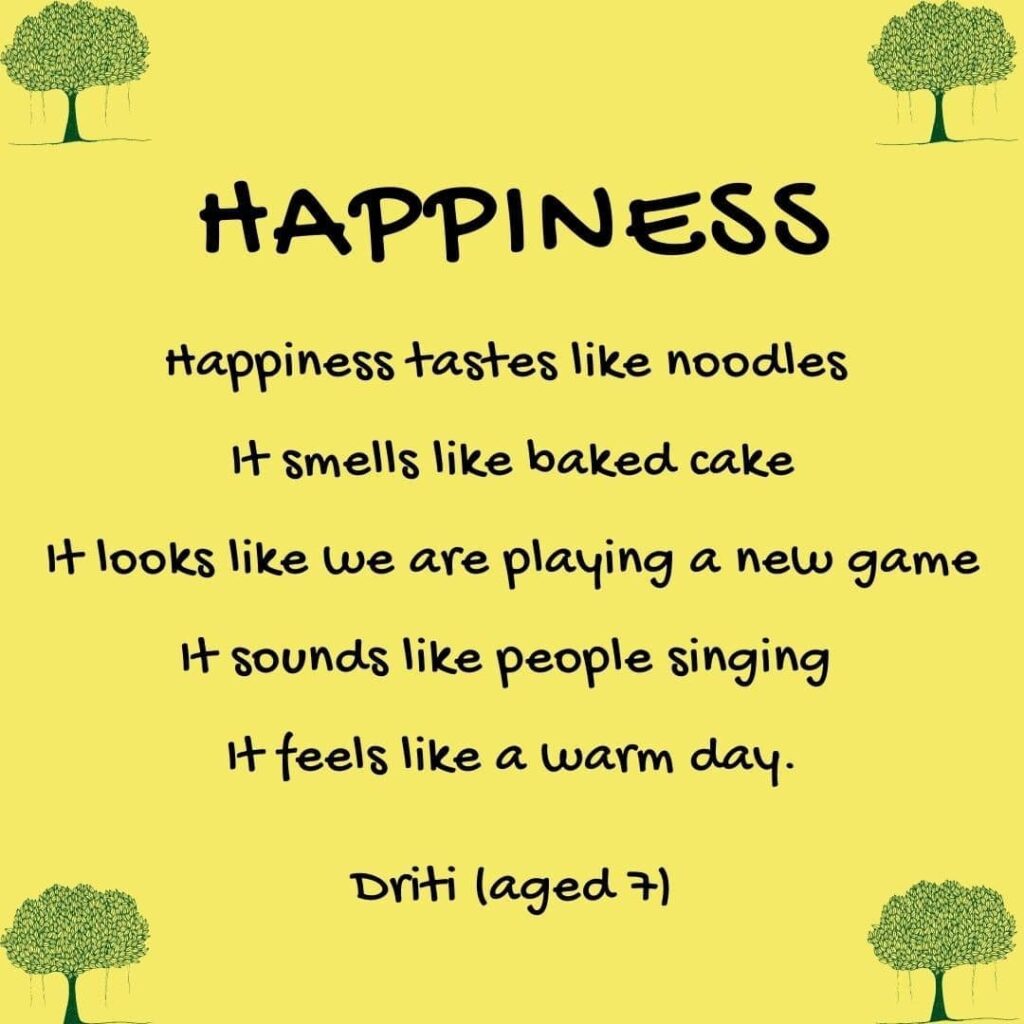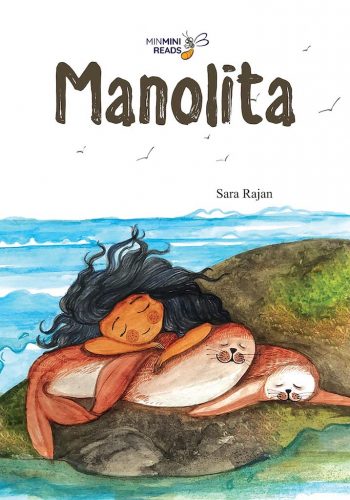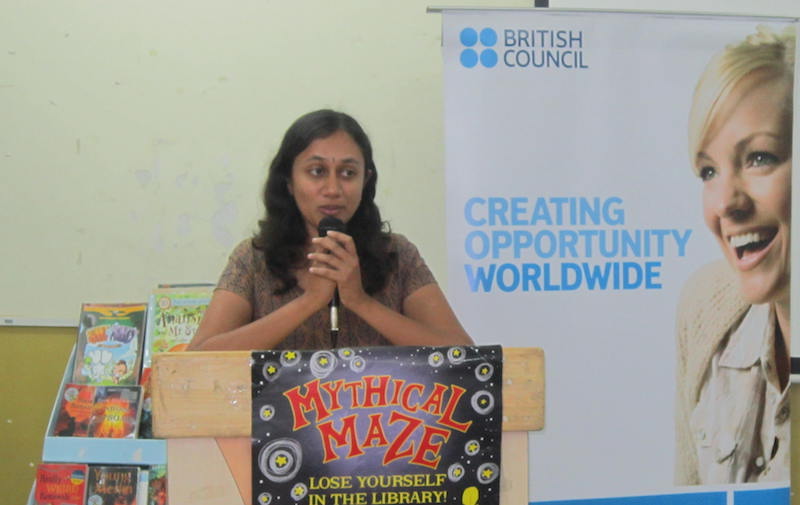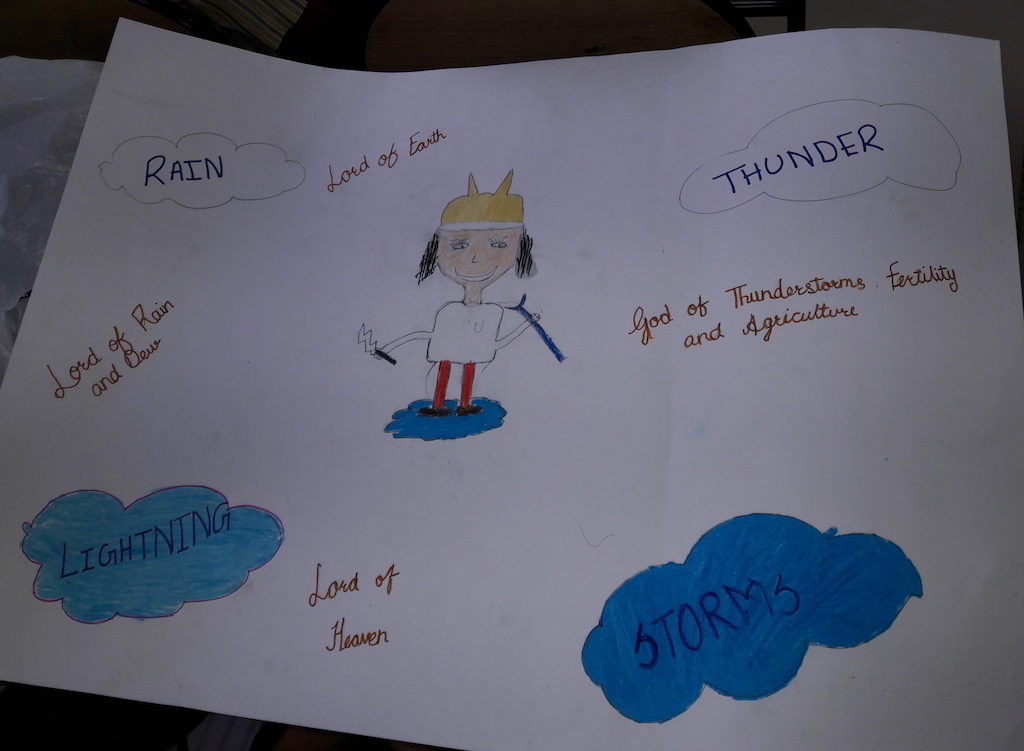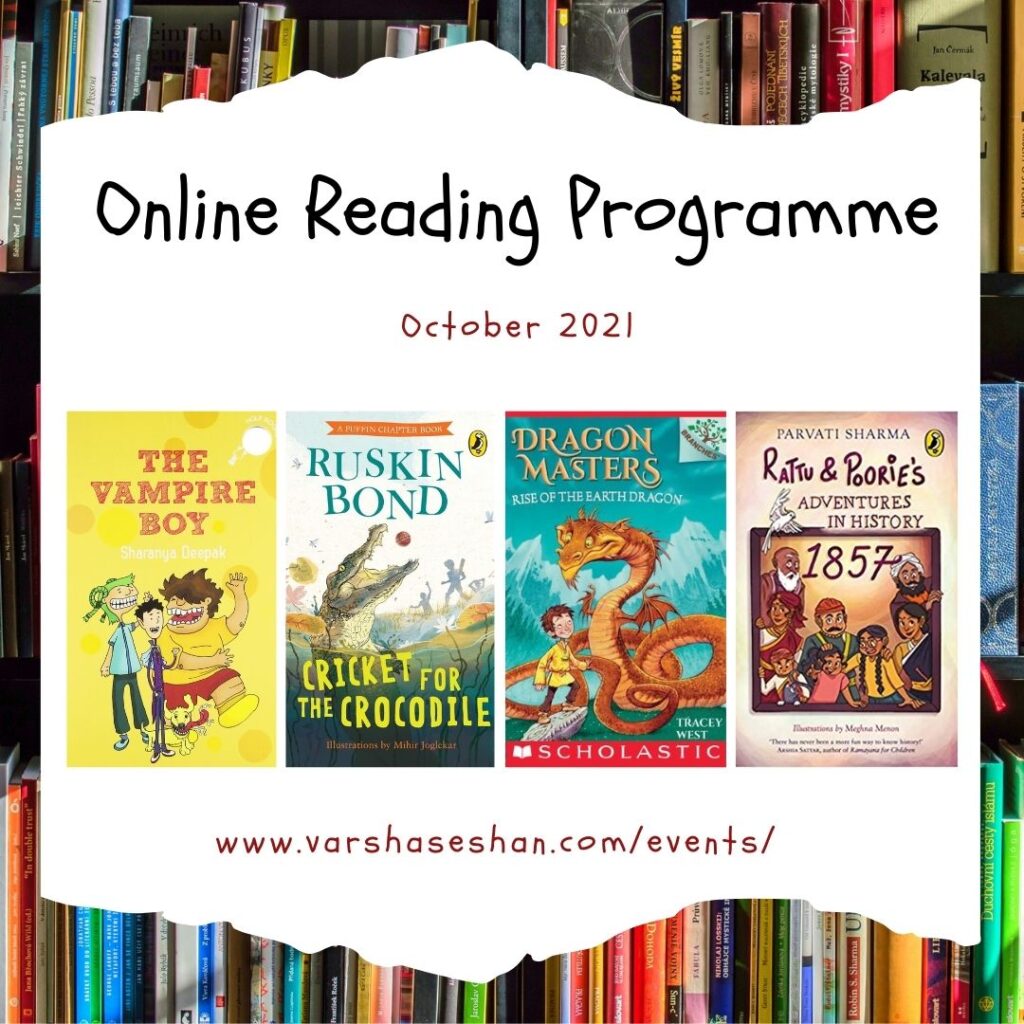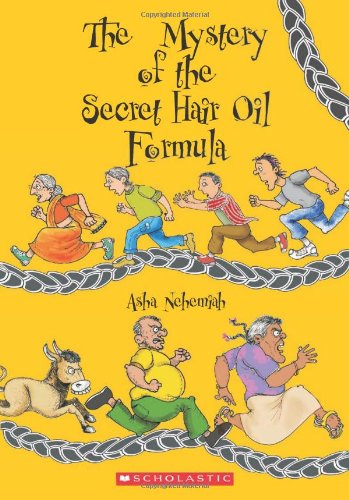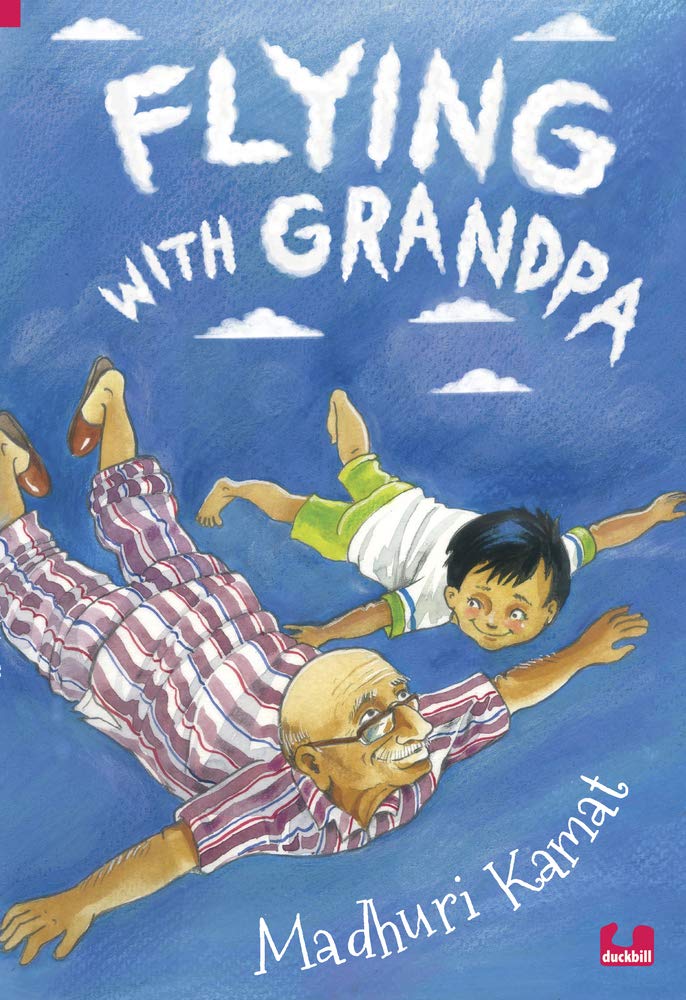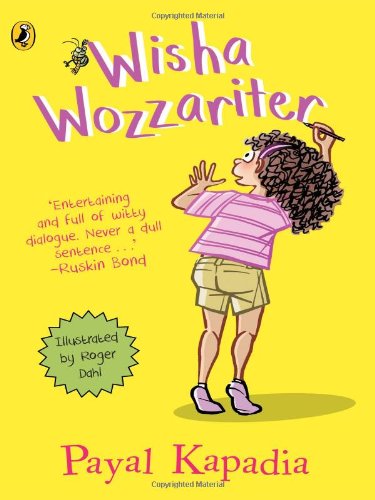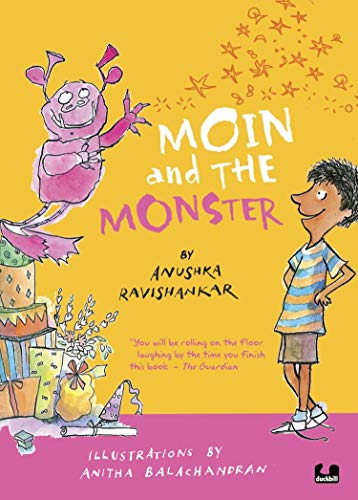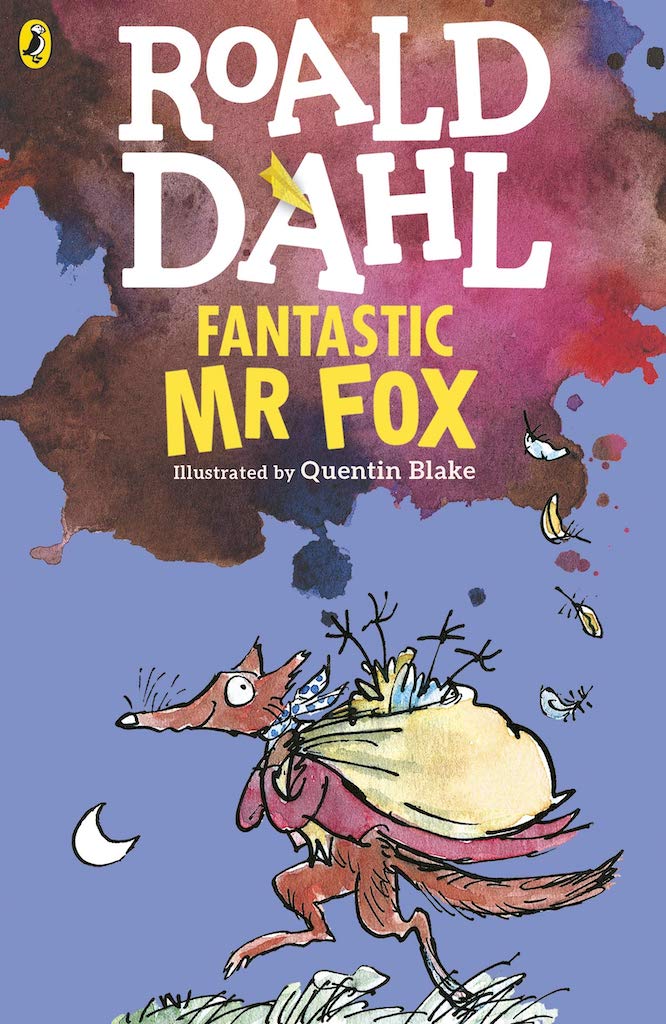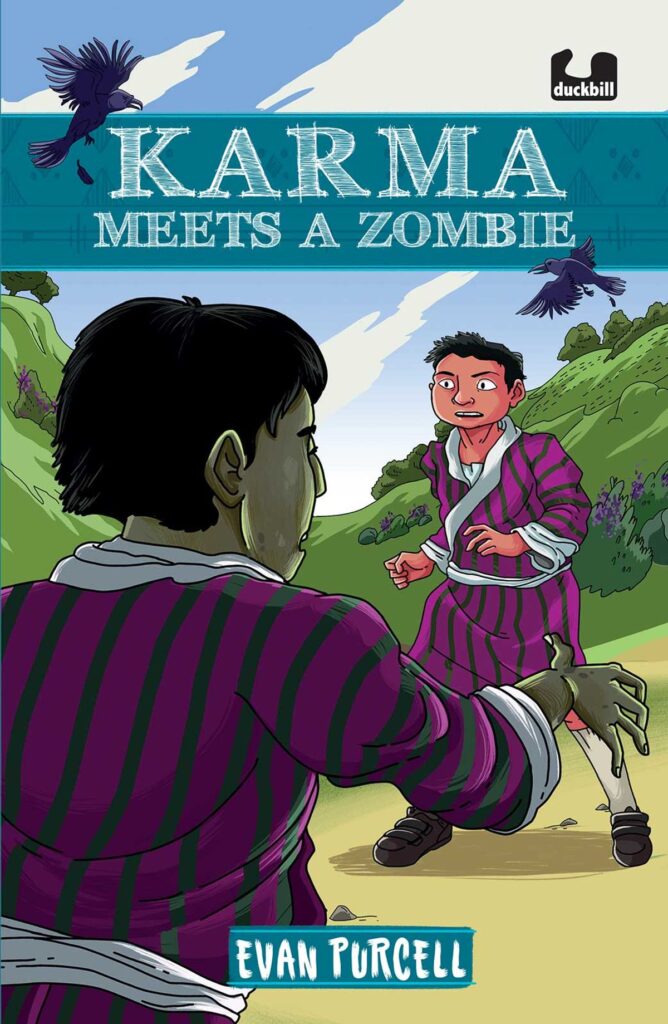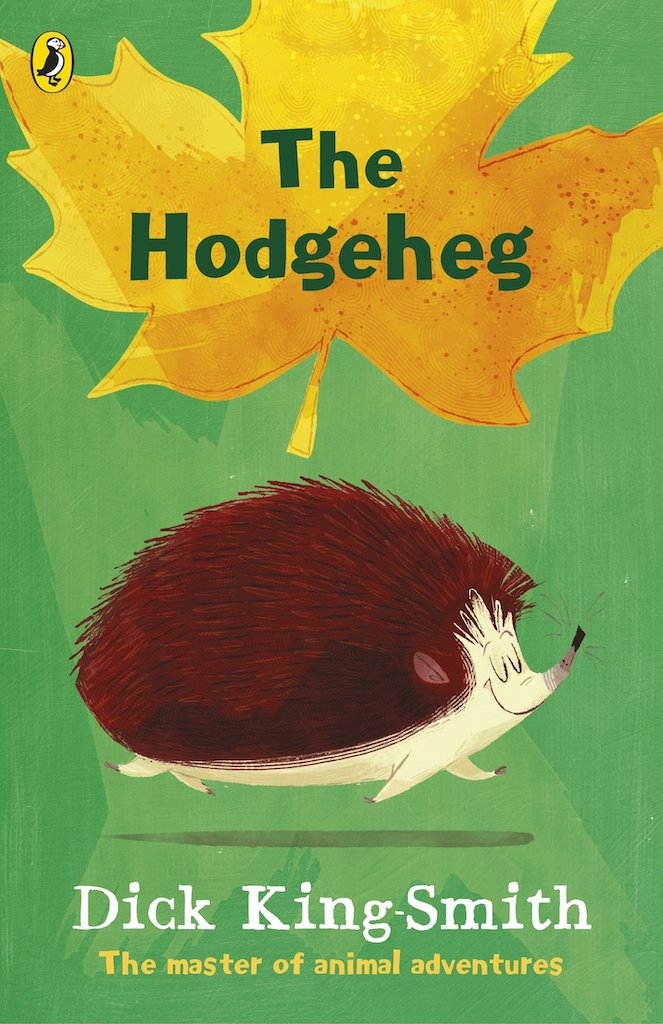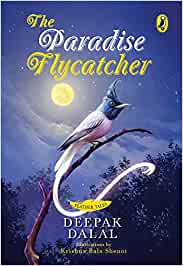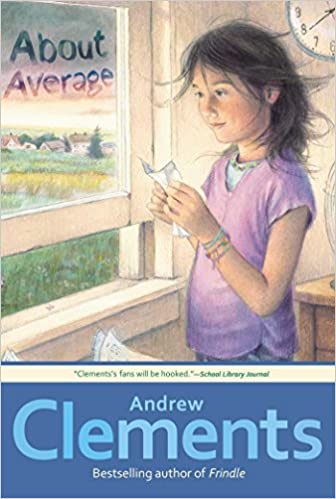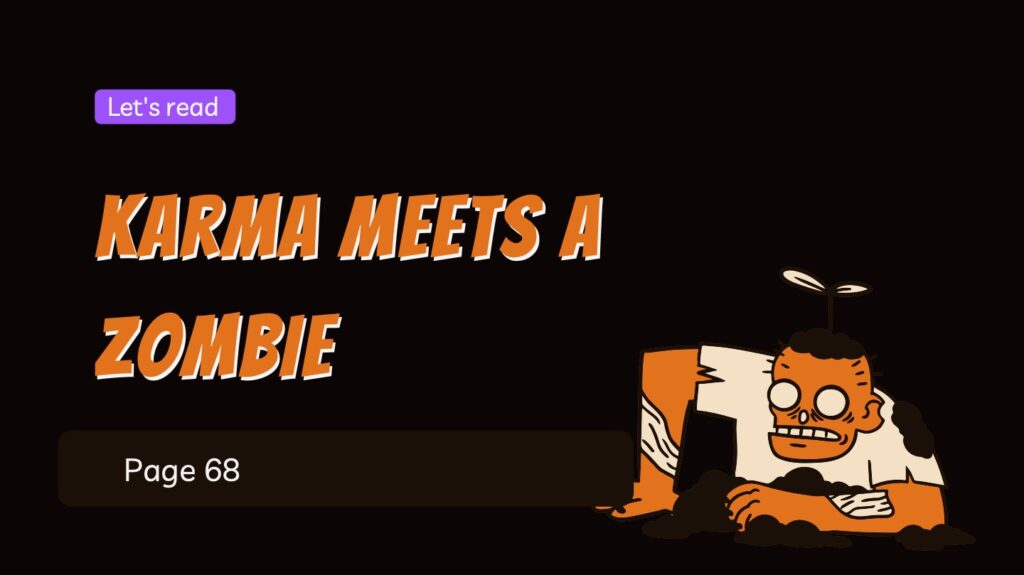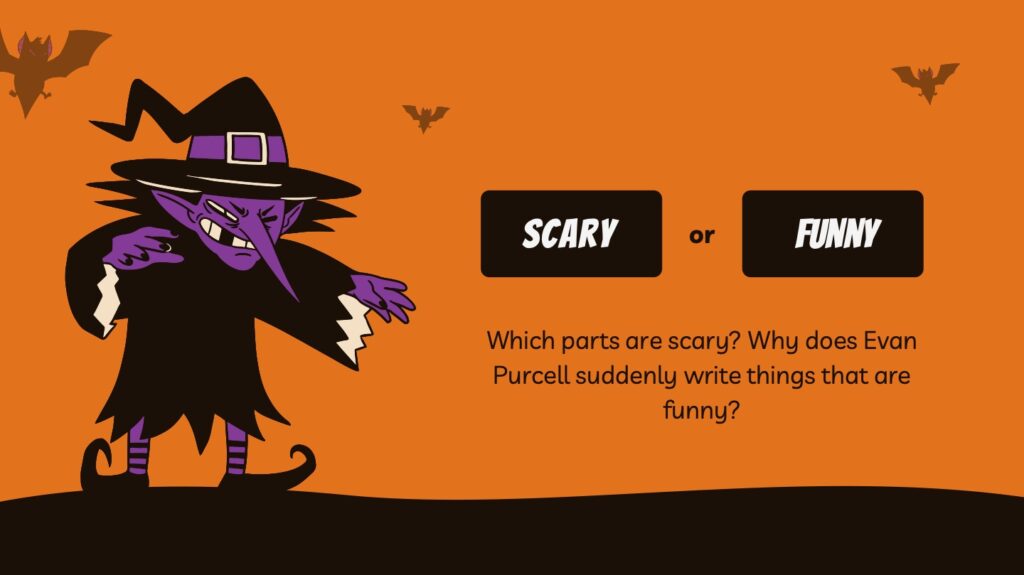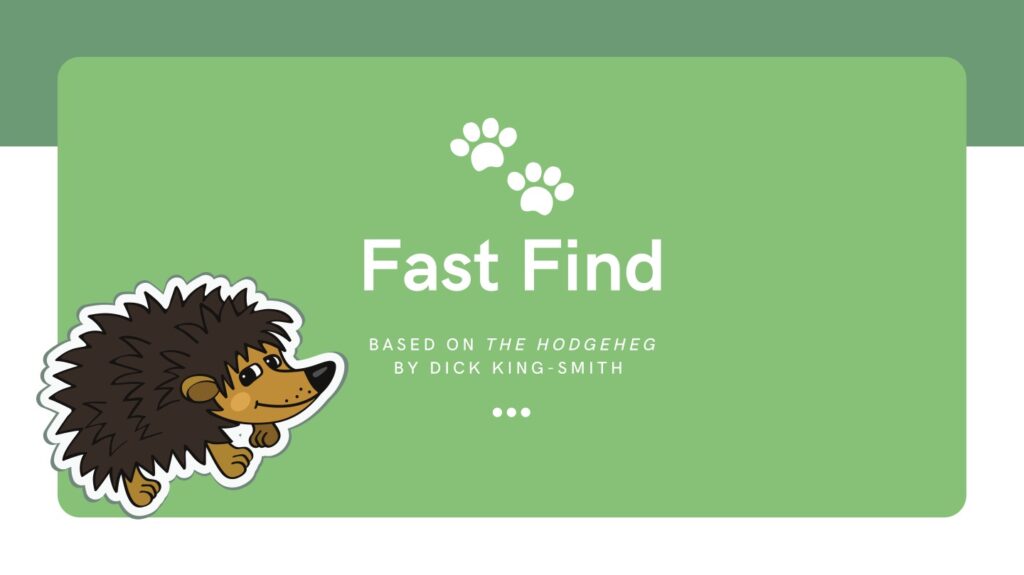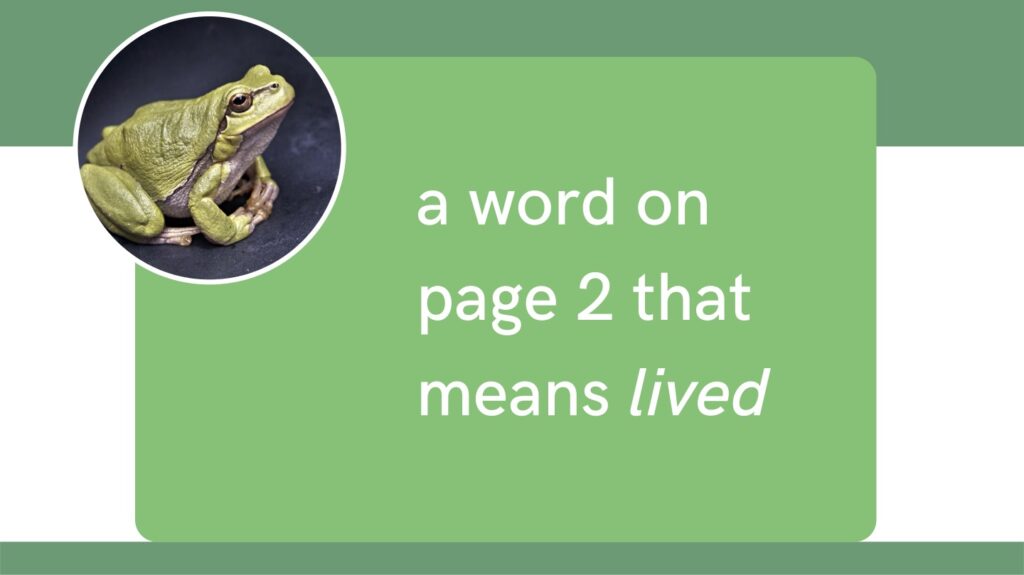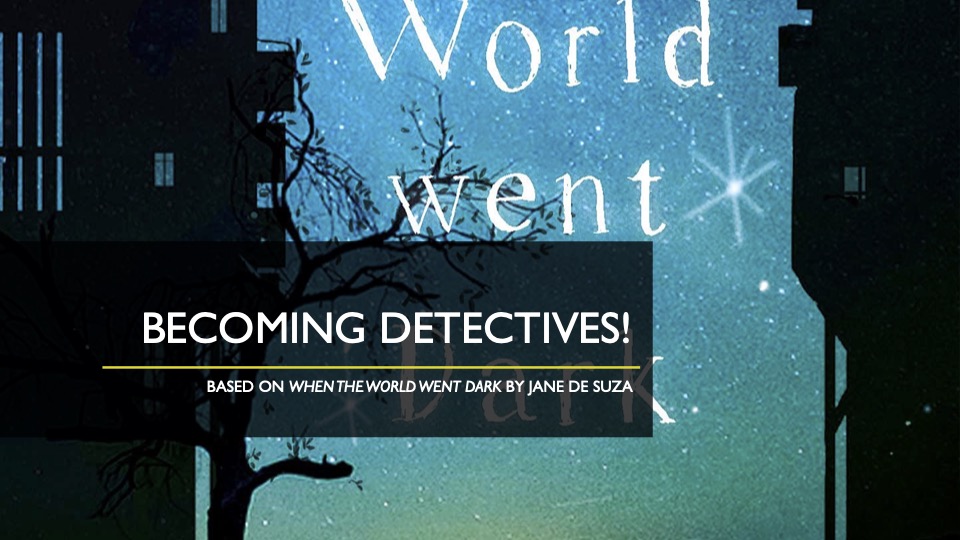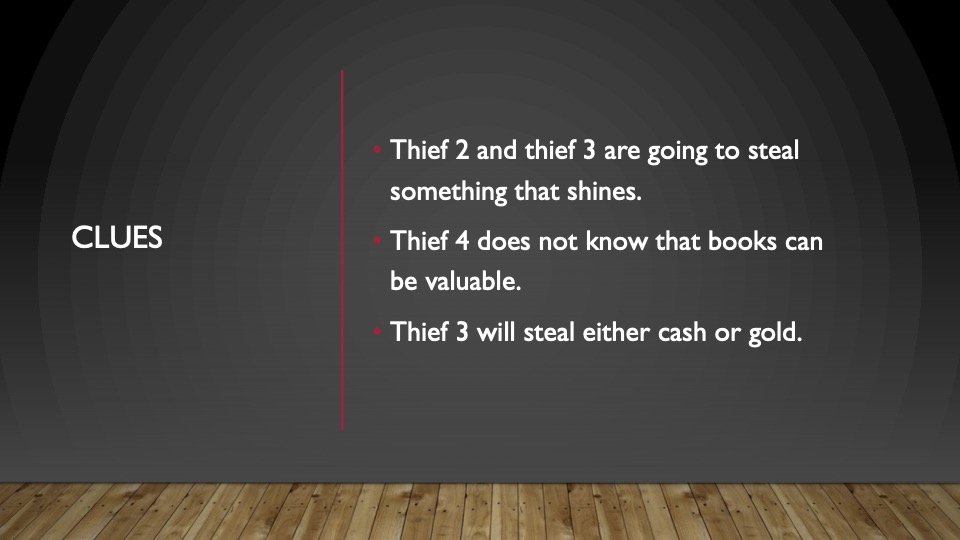Nimmi’s Dreadtastic Detective Days
The Reading Race
A Big Splash
Malhar in the Middle
Names and Words
Peanut vs the Piano
We’re reading Peanut vs the Piano at two of my book clubs. Peanut, Papad and Pickle. What funny names those are!
“I hope their parents named them after their favourite food!” I said. “Not things that were lying around. What if your parents had named you after their favourite foods? What would your names have been?”
“Fish!” said Zayn. “My name would have been Fish.”
“Like the dog in At Least a Fish!” someone said.
So, Zayn amended, “Fish fries!”
Aarav thought about it. “I think I would be called Kalidal Pizza.”
We couldn’t help laughing. And then, he changed his Zoom name to something even more specific – Dal Makhani Four Cheese Pizza.
Ira could not think of what her parents would name her. “They like everything!” she complained. Finally, she settled on ‘Mutton’. Mutton. That’s what she would be called.
And Aarya? Her parents like very different things. “If my father had named me, I would be called Sushi. If my mother had named me, I would be Potato Chips. So, Potato Chips Sushi. No. Sushi, Potato Chips!”
Promptly, they all changed their screen names and I had a feast on my screen that day!

Paati Goes Viral
Soon, it was time for my session with ages nine and ten. We’re reading Paati Goes Viral, and I’ve been thinking about the phrase ‘goes viral’. Where do words come from? How do circumstances lead to the invention of words like contactless and acronyms like WFH and LOL? We discussed etymology and then, we did a fun group activity. I asked them to think of any word we would use often in class and make up another word that we would use instead, right through the weeks that follow. Now, look at the words we have!
book = strook
ma’am = sclem
creative writing = C. R.
viral = electric
So, the strook we’re reading right now is Paati Goes Electric. The C. R. activities are going to be fun, yes, sclem!
Green Reads – Part 2
The Golden Eagle. With its gorgeous pictures and gripping storyline, it drew us in. “I think I’m going to like this even more than The Butterfly Lion,” said one child. Just by chance, all three books we read during this edition of my book club featured animals. Manolita has seals; the title The Butterfly Lion says it all – butterflies and lions; The Golden Eagle has a profusion of birds. Many of the children have never seen storks, ospreys, harriers, green pigeons and thrushes, and the book brought these alive to us. It was time for a follow-up activity, one that we threw our hearts into. What birds would you like to talk to us about? That was the only question I asked the children at my book club.

“I hope to go to Zimbabwe someday and see the African Fish Eagle,” said Amritayu. Eagles fascinate him, and even more so because of the book we read on the golden eagle.
“The yellow-footed green pigeon is the state bird of Maharashtra,” said Sohum. I suggested this to them last week – each of them could talk about their state bird since they join from four different states. Sohum, signing in from Mumbai, did just that.
“The emerald dove is the state bird of Tamil Nadu,” Siddharth told us. Even though he now lives in Karnataka, he was in Madurai until 2021, and the emerald dove, rather than the Indian Roller, was the one he chose to share with us. “I’ve never seen one, but I would love to!”
Sangam told us about the peacock, our national bird. “From my grandparents’ place in Sivakasi, I see so many peacocks, and they’re beautiful. We even have a game we play about peacocks as we watch them fly away.”
Escaping to the jungle and going birdwatching in Bhigwan drew me to learning about birds and starting to identify them, but books like The Golden Eagle make me think – perhaps literature can help us take the first steps too!

Green Reads – Part 1
On social media, I’ve been seeing posts about book club facilitators introducing green reads to children. “What a lovely idea,” I found myself thinking. I’ve always loved stories about the environment. I read post after post, and then I stopped.
Wait a minute! I’m reading green reads with my book clubbers too – A Very Naughty Dragon with two bunches of seven and eight-year-olds, and The Golden Eagle with the slightly older ones! So, I reached out to Archana, who runs AA’s Book Nerds, asking if she’d like me to jump on the bandwagon. I had no idea how structured her Green Reads mission was, but …
We’re trying to draw attention to our role as book club hosts and indies and our contributions in the kidlit space.
Archana Atri, AA’s Book Nerds
Perfect! And so, here’s where one of our explorations of A Very Naughty Dragon led us.
As planned, we started reading this book with the last few pages. Komodo dragons are classified as a vulnerable species, we learned, because there are only a few thousand of them left in the wild. They’re fascinating creatures with stinky breath. They can throw up at will to reduce their body weight when they’re in danger and have to run! So, I asked the children, “What other wonderful creatures do you know about?” And in the next class, here’s what they came up with.

“I want to talk about the Pink Fairy Armadillo,” said Zayn. “And the first thing I want to say is that they’re very much a real thing.”
“Zebras are my favourite animal,” said Driti. She told us about how zebra stripes are like fingerprints – no two zebras have the same stripes. Coincidentally, she was wearing a zebra-striped T-shirt in class!
“I have soooo much to say about red pandas!” said Ira, but she managed to keep it short and interesting, telling us about red pandas in the wild and in captivity.
“Do you know about Vaquita porpoises?” asked Aarya. She held up a jar, which she’d showed us a few classes ago. “I’m collecting money to save the Vaquita porpoise because there are only TEN OF THEM LEFT! I’ve collected 934 rupees so far.”
“Hyenas are from the cat family,” Aarav told us. “Some people think they look like dogs, but they’re more related to cats.”
Vania shared her screen with us as she spoke about the quokka – the happiest animal on earth because it looks like it is perpetually smiling.
“I want to tell you about manatees,” said Aashvi, holding up a toy manatee. “They’re the cows of the sea.”
And once again, as I heard the children talk about their favourite animals, endangered creatures and the fascinating world around us, I found myself thinking that young people will save the world. They just need a little help from the not-so-young.

Careers in Writing – Fergusson College
A career in writing – what does that mean?
As part of UGC’s STRIDE (Scheme for for Trans-Disciplinary Research for India’s Developing Economy), the English department of Fergusson College invited me to talk about making a career in creative writing. What I loved was that I didn’t speak just to students of the English department; it really was trans-disciplinary!

What would a talk on a career in creative writing involve? For me, first, it would involve demystifying the publishing process. Secondly, to use a word that the organiser used, it would need to deglamorize the life of a writer. If you’re talking about a career and not a hobby, writing is not about penning down your thoughts and expressing your feelings. No. It’s not the random poem here, or the the snippet of deep, philosophical thought there.
Okay, so you write poetry. When did you last buy a book of poems? Does your answer help you understand whether writing poetry is sustainable as a career?
How do you go about the querying process? What kind of timelines are you looking at? If a publisher pays me an advance of ₹15,000 for a book that is three years in the making, you can do the math and see whether it adds up to a career.

It’s lovely when you can feel new ideas dawning on listeners as you speak. To a great extent, that’s how I felt.
“I read barely any contemporary Indian writers, and I think that should change,” said one.
“I understand that beginning a letter with Respected Sir/Madam is not inclusive, so I won’t do it.”
Do you see what I mean?
Adventure on Wheels
My Father’s Dragon
My Year in Workshops: 2021
About Average
The School is Alive!
Peanut vs the Piano
Art, Music and Movement with Veda Aggarwal
Yes. Each time I invite a guest to speak to my creative writing programme, I realise that the session is as much for me as it is for the children. As a writer, I am often caught in a capitalist circle, writing with a clear goal in sight. What is the purpose of a piece? What do I want my audience to feel?
Yet, sometimes, writing is just writing. The arts are interconnected and once in a while, we need to be reminded of that.

When we were children and teens, Veda and I spent hours talking about art, music and literature. We read Shakespeare and made notes (which I probably still have somewhere). We discussed Giotto and Matisse, Van Gogh and Gaugin. Veda painted and drew; I didn’t. When Veda was ten (I think), she started playing the guitar and we began to listen to classical music together. We talked about Vivaldi and Mozart, Schubert and Beethoven. We thought about and spoke about music appreciation.
And all this came together in the creative writing workshop she conducted for us yesterday. She played snippets of various pieces for us, and in a beautiful, organic way, the children travelled from emotions to scenes and stories. We listened to Vivaldi, Schoenberg, Mussorgsky and Telemann. Veda led us to a little written exploration as we listened to the last of these.
What person or people come to mind as we listen? Can we find the beginnings of a story in music? It made me think. Just like in some kinds of stories, when the music comes to an end, we feel like we’re back in the same place, just slightly changed in some way.
Art
Some people, like Kandinsky, could see colour as they listened to sounds. On the other hand, people like Mussorgsky wrote music when they looked at paintings. Veda shared seven paintings with us and we explored all kinds of ideas and thoughts.
Movement
Finally, Veda guided us through a series of movements leading to what is called Tadasana, or the mountain pose. Feeling our feet firmly on the floor and our hands reaching for the sky, she asked us three questions. What makes you feel stable? What does grounded mean to you? What are you reaching for?
For me, above all, this workshop was about writing for the sake of writing itself, not for any other purpose. Writing is exploration. It connects us to the world around us. It need not tell a story! It could just make us aware of ourselves, our emotions, and our feelings.
White Socks Only
White Socks Only is a stunning piece of literature and art, a charming book about a curious child eager to find out whether something she’s heard is true. I revisited this book purely for the purpose of teaching it, and there’s just so much to explore! Of course, the obvious choices would be to visit the themes of racism and segregation. But as a creative writing trainer, there’s much more.
The book opens with the young narrator wanting a story, and not just any story, her favourite story. And she knows just how to get her grandma to tell that story – by asking if she may go to town alone. She knows what the response will be – she may not go until she can do some good there. But she also knows that this will lead to the story of the time her grandmother sneaked out, went to town–and unwittingly did some good there.
Without revealing why her grandmother went to town and what happened there, I can only say that it’s a beautiful story that always makes me smile. Whether I’m teaching diction, word choice, figures of speech or grammar, it’s the perfect story to read. With adults or children, with young writers or a book club … yes, I’ll say it again. It’s perfect. Here’s what we explored during my writing programme this time.
Structure and Narrative Voice
White Socks Only is a story within a story, and both stories are first person narratives. It is ideal to teach the advantages of using the first person narrator. Importantly, I like to teach the idea of making a conscious choice while choosing whose voice to use to tell a story. What would a shift in perspective involve?
I often also tell children about how I wrote Sisters at New Dawn in third person before realising that telling the story from Kannagi’s perspective would work much better. Yes, it’s a middle-grade book, over 30,000 words long. Even so, rewriting it was well worth it because it fit so much better with what I wanted to do with the story.
Dramatic Irony
During this edition of my creative writing programme, I introduced the idea of dramatic irony. Once more, I realised that an activity that works brilliantly with one group of children can fail miserably with another–that’s what happened with my dramatic irony activity! The good part, however, was that I found a video to help me explain the idea better. Then, during the story writing module, we read White Socks Only. And the children were able to identify dramatic irony perfectly in the story, even commenting on how the narrative voice makes dramatic irony possible!
Word Choice
When we introduce concepts like ‘show, don’t tell’, we need to keep coming back to each word we write. In White Socks Only, we have words like ‘hobbled’ and ‘slinking’. What do these synonyms for the word ‘walk’ tell us about the character and context?
White Socks Only is just one of many resources on the wonderful Storyline Online, which is what makes it particularly easy to use in class!
| Title | White Socks Only |
| Author | Evelyn Coleman |
| Tags | Picture Book, Teaching Resources |
| Rating (out of 5) | 5 |
| Age-group | 9+ |
A Very Naughty Dragon
Staging a Script with Lav Kanoi
What an enriching scriptwriting session we had with Lav Kanoi on Saturday! Ah, there’s nothing like a guest session to bring a fresh spurt of energy to our creative writing programme.
“What is a story?” That’s the question Lav began with.
I like the question. What is a story, really? As we talked about it, we came to the realisation that a story can be anything. Can’t it? But that leads to the question, is there anything that a story cannot be?

The discussion that followed led to the idea of form, which brought us to the idea that various forms – a song, a play, a story, a film script – are different because they serve different purposes.
One thing led to another, and through all the excited exchanges, one conversation stands out.
“A play wants to be performed,” Lav said. “Sure, you can read it. But reading a play is incomplete. It wants more. It’s like a tape. It wants to be put in a tape recorder–wait, do you know what a tape recorder is?”
No one said ‘yes’, no one said ‘no’.
“Ah. A CD! Do you know what a CD is?”
“Yes! A computer disk!”
“And what does the disk do?” asked Lav.
“You insert it!” one child said.
“Where?” asked Lav.
“Into a CD player!”
“And what’s on the CD?” asked Lav.
“Um … a movie? Or a song? Something.”
So much for the simile. CDs aren’t sitting around wanting to be played. Tapes aren’t sitting around at all.
Despite it all, the point was conveyed. Lav ended with a fun activity (during which he also pretended to be the Cheshire cat) on Alice in Wonderland, inviting the children to convert an excerpt into a script. We’ve broadened the activity now, taking suggestions from a couple of participants. I’ve asked them to do anything they wish to with the excerpt, playing with a form of their choice. They can write a dialogue or a monologue, a song or a poem. If they want, they can create a video, do voices, record an audio script, anything! I’m waiting to see what they come up with!
The Butterfly Lion
Mira the Detective
Manolita
All About Research with Dr Shayani Bhattacharya
What an enjoyable writing workshop we had yesterday with Dr Shayani Bhattacharya! Every guest session is fun, and I keep realising that when a teacher plans a session, it is meticulous, detailed, excellent!

We discussed what we research, how we research and why we research, but then we went on to something that’s important to all of us as writers – how we share research findings. Sure, you’re fascinated by time travel and wormholes. You read everything you can about them. How can you get your readers to be interested in the same things? When Shayani stressed the idea of finding our unique voice, my heart gave a little leap. It’s so useful when a guest speaker brings up something I’ve addressed time and time again during my writing programmes!
I also loved that Shayani explored the relevance of research in the context of both fiction and nonfiction. Bringing the workshop to travel writing, we spoke of travel literature of all kinds – from travelling through the forest in Little Red Riding Hood to more obvious choices like Around the World in 80 Days and Journey to the Centre of the Earth.
What the participants loved about the workshop was that every aspect of it was interactive. For instance, here’s just one of the four jamboards we created together.

Travelogues, maps, advertisements, travel tourism, travel blogs, journalistic articles … there’s so much we can write if we just research. Shayani left the participants with a writing assignment, and I’m waiting to read what they write! Like one of the participants said in the chatbox after we’d figuratively explored the earth, the solar system and the galaxies beyond ours through travel writing, ‘Thanks a whole universe! It was so cool!’
Four Workshop Anecdotes
So many tiny things happen during workshops! Here’s a quick roundup of things that make me smile.

Whispering
During one of my sessions, a child raised his hand. I quickly summed up what I wanted to say so that I would not lose my chain of thought, and then asked him to speak.
‘Actually, I want to talk to A,’ he said.
Amused, I nodded to him to go ahead.
What he wanted to say to A was utterly and completely unrelated to what we were doing.
And that’s what made me realise – at online classes, whispering has to happen with the teacher’s permission!
I like
The protagonist of The Vampire Boy is Kris, a vampire who hates blood. With that in mind, I asked the children to come up with sentences about themselves, telling us two things: one, something they like that their friends also like, and two, something they like but their friends don’t. My favourites?
My friends like troubling my parents, and I do too!
My friends like jumping on the sofa, and I do too!
And the surprising ones:
My friends like ice-cream and chocolate, but I don’t.
My friends like drawing, but I don’t.
Bringing Things to Life
I also love the spontaneity of workshops! In The Vampire Boy again, Kris’s friend Bo cannot spin on one leg without falling on her face. We read that and instantly, the children got to their feet to try it out.
I can hop in a circle on one leg. Does that count?
Anyone can stand on one leg!
I can spin on one leg!
We read of Kris carrying a bottle of A- blood to school, and the moment I explained what that was, three of the children disappeared. They had to ask their parents – immediately, of course – what their blood group was!
The Chocolate Touch
And then, of course, was this lovely thing I shared on Instagram, but not on my blog.
When we read The Chocolate Touch, I asked children to design their own chocolates, name the company that manufactures it, and add any other details they like.
Here’s what followed!



Rattu & Poorie’s Adventures in History: 1857
Reading, Reading, and Reading Some More
Rise of the Earth Dragon (Dragon Masters #1)
Cricket for the Crocodile
The Vampire Boy
Raise Hand
Children will be mischievous. They will always, always try to find ways to fool their teachers. The most common excuse during virtual sessions?
“I lost connection.”
Much as children like to believe otherwise, teachers can tell when children aren’t attentive. They stare at the screen and their eyes glaze over. At my book club, I know they aren’t reading along. For one, they shouldn’t be looking at the screen at all. If they’re gazing at the screen, they’re doing something else. Of course.

But when I ask them a question linked to what we’re reading, pat comes the response, “Sorry, I lost my connection. I don’t know where we are.”
So, yesterday, I told the children, very casually, to raise their hands immediately if they lose track. “Don’t wait until I ask you to read. If you lose your connection and can’t find where we are, raise your hand!”
I could see the bewilderment. A new plan was needed, and fast!
“But on my screen … I don’t have … There’s no ‘raise hand’ button on Meet!”
“Your real hand,” I said. “Just put your real hand up.”
The idea was clearly new to the child.
My real hand? Really?
Ah, virtual world problems.
Book Club Discussions
We just finished reading Sandy to the Rescue, the first of five books we’ll be reading at this edition of my book club. One of the joys of reading the hOle books at the reading programme is that the length is perfect. We have enough time to read and do activities during each session, which, for me, is what a book club is about.
In Sandy to the Rescue, six-year-old Aftab hides first under the dining table and then in the bath tub.
This made me ask the children, “Where would you hide? If you had to smuggle a friend into your house, what would be a hiding place?”
We discussed the storage cupboard, a balcony with newspapers (ideal for a little cushioning) and under the bed. I then led them to another activity – finding a hiding place for something a little smaller, like a secret note, perhaps. What could they write in the note? That led me to an unexpected discussion because one of the things I told them they could write about was what they’re afraid of.

“I’m afraid of God,” said one child.
I could see that this was a new thought for several of the others because they were thinking of other things that, maybe, they thought were more trivial.
Even so, one child said, “I’m afraid of dogs. I don’t like it when they come close.”
Unexpectedly, a child piped up, “Oh, I’m more afraid of zebras! Dogs are nice. Zebras are frightening.”
Before I had the time to process this, a fourth child said, “I’m afraid of cancer. It is the scariest thing in the world.”
Somehow, the conversation around cancer continued, with one child saying that cancer has a cure, so she’s not afraid of it.
“But cancer kills people!”
“But it doesn’t have to. You can fight it. Anyone can fight cancer.”
“No, it is frightening, and–“
The conversation went on until one child asked, “Could we stop talking about cancer?”
And we did. But that didn’t stop me from thinking about it.
Immediately, another child said, “I’m afraid of floods. Floods are the scariest of all.”
And that’s a thought that hadn’t struck me. Why is she afraid of floods? I asked her if she had ever seen a flood and she shook her head. But what causes that fear?
After the session was over, I began to think about what scared me as a child and what scares me now. Are we so frank about what really frightens us?

